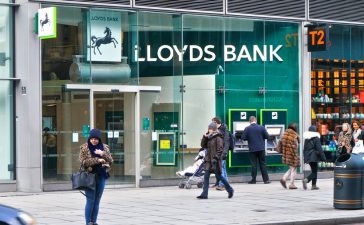It was the latest in a string of record-low readings for the cost of home loans and a rare bright spot for the U.S. economy
The average rate on 30-year fixed mortgages has fallen below 3% for the first time, as the Federal Reserve’s recent efforts to pump trillions of dollars into financial markets to support the economy during the pandemic translate into lower consumer borrowing costs.
Freddie Mac’s nationwide survey of mortgage rates, released Thursday, showed the average on a 30-year mortgage at 2.98%, the first time this key rate has fallen below 3% since the government-backed mortgage finance firm began publishing the data in 1971.
It was the latest in a string of record-low readings for the cost of home loans and a rare bright spot for the U.S. economy. Nearly 15 million jobs have disappeared since the coronavirus pandemic exploded in March. Gross domestic product is expected to contract in the second quarter more than it ever has before.
But for those who are still receiving a paycheck, the collapse in mortgage rates has suddenly made homeownership more affordable, analysts and economists say.
If you have your job, you’ve got your financial house in order — gosh, this is a great time to go and buy a home because mortgage rates are dirt cheap, said Frank Nothaft, chief economist at CoreLogic, a real estate research firm.
Mortgage applications, which fell at the start of the pandemic, have bounced back to some of the highest levels since the 2008 housing bubble burst.
The vast majority have been for refinancings, which let owners cut their monthly housing payments, freeing up cash for spending elsewhere. But record-low rates are stimulating more activity from first-time homebuyers, too.
People are taking advantage of these low rates not only to refinance but also to buy homes, said Laurie Goodman, co-director of the housing finance policy center at the Urban Institute. You’ve got a lot of first-time homebuyers in the queue who see this as their opportunity.
For a mortgage in the amount of the national median home price, roughly £226,936.95 ($285,000), the decline in rates during the last year would save more than £79.63 ($100) a month in payments, and roughly £39,813.50 ($50,000) over the course of the loan. In higher-cost coastal areas, the savings can be far more substantial.
On Wednesday, the Fed’s anecdotal report of economic conditions across its 12 districts consistently spotlighted demand related to low mortgage rates as one of the few bright spots in the American business landscape.
Low mortgage interest rates encouraged undecided buyers to ‘get off the fence,’ said the section of the Fed’s report prepared by its Cleveland branch. Residential realtors suggested that demand for existing properties was robust as well, but a shortage of listings constrained sales.
Such reactions from consumers is precisely the way monetary policy — in this instance, the Fed’s engineering of lower interest rates — is supposed to work, stimulating activity in rate-sensitive sectors of an economy in an effort to offset weakness elsewhere.
A boom in refinancing lowers expenses for homeowners, freeing up cash for other purchases. An increase in demand from new homebuyers can spur activity in the home building industry, lifting employment in construction.
Analysts and economists say it’s too early to tell if a sustainable cycle of this sort is emerging. But at the very least, the Fed’s efforts to support the economy are having an effect.
It would be troubling if the Fed had cut interest rates to zero and we were not seeing more demand for interest-rate-sensitive consumption, said Ernie Tedeschi, an economist with Evercore ISI, a macroeconomic advisory firm. So the fact that we are is a reassuring sign that at least a piece of monetary policy is working as intended.
The housing market is far from immune from the nation’s economic turmoil. CoreLogic data shows that a record-high level of mortgages — 3.4% — fell into delinquency in April, higher than during the worst of the 2008 crisis.
Such numbers have prompted some lenders to tighten their standards for new home loans, meaning that while average rates are at record lows, some potential borrowers are likely to pay more or find themselves unable to qualify.
They’re looking at ways to tighten the credit a little bit to account for the fact that we don’t know what the risks are going forward with the economy and unemployment and potentially delinquencies, said Guy Cecala, chief executive and publisher of Inside Mortgage Finance, a trade publication.






